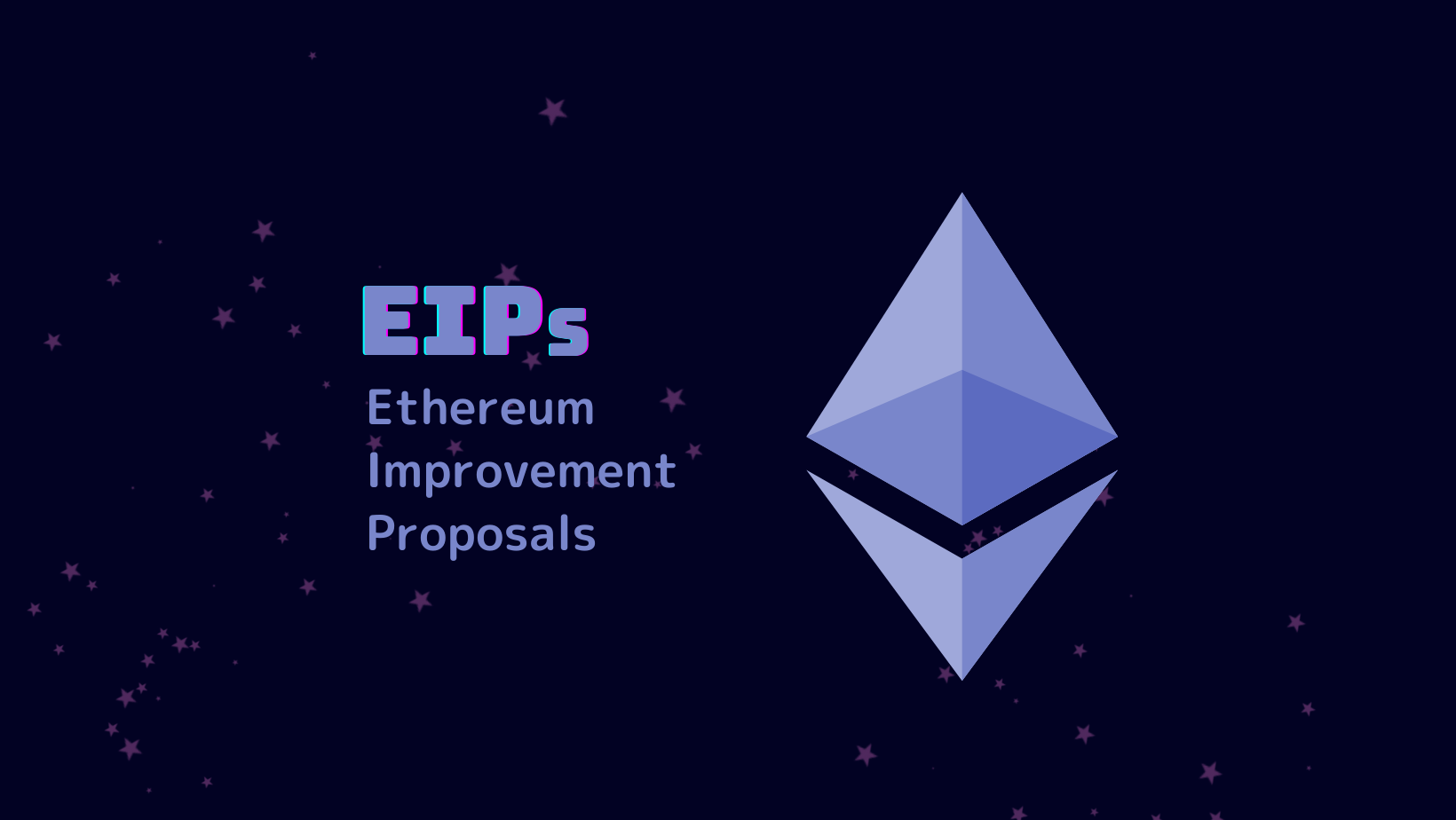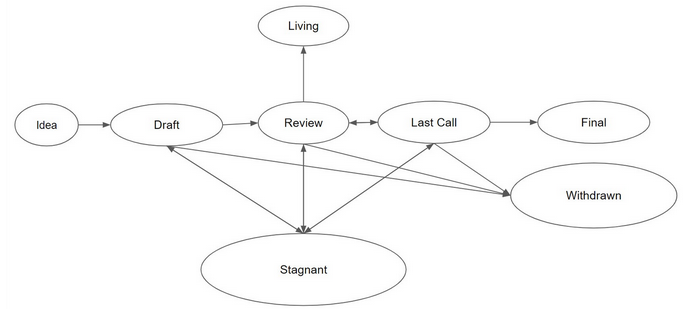
EIPs (Ethereum Improvement Proposals)
How To Update the Ethereum Network
The Ethereum network doesn’t have a singular owner or company in charge of it, so updates are made differently. Any community member can draft a proposal which can become an update after following a series of steps.
Proposals to update the Ethereum network/ecosystem are known as Ethereum Improvement Proposals, or EIPs. EIPs have a rigid and transparent process outlined in EIP-1 such that anyone can participate.
EIP Lifecycle

Source: EIP-1
Idea - An idea that is pre-draft. This is not tracked within the EIP Repository.
Draft - The first formally tracked stage of an EIP in development. An EIP is merged by an EIP Editor into the EIP repository when properly formatted.
Review - An EIP Author marks an EIP as ready for and requesting Peer Review.
Last Call - This is the final review window for an EIP before moving to FINAL. An EIP editor will assign Last Call status and set a review end date (`last-call-deadline`), typically 14 days later. If this period results in necessary normative changes it will revert the EIP to Review.
Final - This EIP represents the final standard. A Final EIP exists in a state of finality and should only be updated to correct errata and add non-normative clarifications.
Stagnant - Any EIP in Draft or Review if inactive for a period of 6 months or greater is moved to Stagnant. An EIP may be resurrected from this state by Authors or EIP Editors through moving it back to Draft.
Withdrawn - The EIP Author(s) have withdrawn the proposed EIP. This state has finality and can no longer be resurrected using this EIP number. If the idea is pursued at later date it is considered a new proposal.
Living - A special status for EIPs that are designed to be continually updated and not reach a state of finality. This includes most notably EIP-1.
Types of EIPs
Some EIPs - known as Meta or Informational - relate to standards and don’t actually have any software development involved, such as EIP-1.
ERC EIPs cover application layer development and standards such as EIP-20, which set the ERC-20 token standard in place.
Core EIPs are a type of proposal where core development and a consensus fork are required. EIP-3675, known as The Merge, and EIP-1559, known as the London Hard Fork in which base gas fees for burning were introduced, are recent Core EIPs that have gained a lot of attention for the large changes they introduced.
Other EIP categories include Networking and Interface.
Notable EIPs in Progress
The roadmap to improve Ethereum’s scalability is broken down into EIPs. A high level view of the roadmap includes the following upgrades:
Merge - Merge with Beacon Chain - EIP-3675
Surge - Divide the network (sharding) - EIP-4844
Verge - Switch digest method
Purge - Lessen chain size
Splurge - Future enhancements
References:

